During week 5, I traveled with my family to Victoria, B.C. and explored slow foods and wine terroir. Victoria has an incredible food culture – it’s actually hard to find a restaurant that isn’t farm-to-table.
The town of Victoria also rests just south of the incredible Cowichan Valley, which has many estate wineries and even a Cittaslow town. It was an incredible trip, and offered many opportunities to engage with my food and drink.
The first winery I visited was Church and State Wines. They offer some estate wines, though most are blended with grapes grown at their farm in the Okanagan Valley. Since this was my first wine tasting in months, I chose to focus less on terroir and more on re-acquainting myself with the process of wine tasting and trying to identify flavors.
Later that day, we visited a cidery and a honey farm. The cidery, Tod Creek Craft Cider, doesn’t yet have enough yield from their trees to totally source their apples from their farm, but all of the cider is processed on-site, and some flavors include blueberries grown locally. It was interesting to taste cider the way I would wine, and I tried to isolate flavors within the ciders – flint, honey, ocean, etcetera. Cider is so often over-sweetened to compensate for the use of mediocre apples, but the cider at Tod Creek offered so many delicious dimensions because the apples they use are excellent and the brewing process is small-batch and carefully managed by a few employees.
The honey farm we visited, Urban Bee Honey Farm, was a small shop mainly comprised of beekeeping materials, though they also sold some bee products. Though I am interested in (and appreciative of) bees, I have never spent very much time exploring the practicalities of farming them, and to speak with a master beekeeper on the subject offered new depths to my love of the Apis mellifera. At the farm, I was told the most fascinating thing I may have ever heard about food and the labor we place on non-human organisms for our own fulfillment: “If bees made minimum wage, a jar of honey would cost $172,000.” I purchased bee pollen and honey to make honey bread. To actually get the benefits of bee pollen, it must be combined with honey and rested for 3-5 days. Then, the mixture can be used however you wish (on bread, in tea, etc).
A few days later, I ate at an incredible slow foods farm-to-table restaurant in downtown Victoria called OLO. From the mission statement of the restaurant:
“Every aspect of OLO has been created with the intent of sharing experiences over beautiful food in a welcoming and inclusive environment. OLO means ‘hungry’ in chinook jargon – a combination of Chinook, English, French and Chinese used by the earliest settlers and first nations in the region. We honour our ancestors’ traditions by preparing beautiful food from ingredients procured directly from the source.”
At that meal, I enjoyed several courses, including rye toast with lamb tartare, local poached salmon, and seared duck with a dumpling. I had a delicious rhubarb and elderflower dessert, and drank an island pinot noir and a cup of coffee described on the menu.
The next day, we drove to the Cowichan Valley. There, we visited Cherry Point Estate Wines, which was my favorite winery we visited, and had my favorite wines. They had an incredible Gewürztraminer, though my absolute favorite was a 2014 Lágrimas Negras with a delicious plum and blackberry flavor. One of the specialties of the winery is their Solera Blackberry dessert wine, which was started in 2004. The blackberries are grown on the winery or brought by local people from blackberry bushes in the area, from whom the winery purchases the fruit. Solera describes the method of aging the wine, though many balsamic vinegars, soy sauces, and whisk(e)ys are created the same way. Even traditional Molé is prepared similarly. As described by Wikipedia:
“Solera is a process for aging liquids such as wine, beer, vinegar, and brandy, by fractional blending in such a way that the finished product is a mixture of ages, with the average age gradually increasing as the process continues over many years. The purpose of this labor-intensive process is the maintenance of a reliable style and quality of the beverage over time. Solerameans literally “on the ground” in Spanish, and it refers to the lower level of the set of barrels or other containers used in the process; the liquid (traditionally transferred from barrel to barrel, top to bottom, the oldest mixtures being in the barrel right “on the ground”), although the containers in today’s process are not necessarily stacked physically in the way that this implies, but merely carefully labeled.”
This wine specifically connected to my general study of historical foods, as a bottle of Solera is quite literally a taste of history. Though Cherry Point’s has only been going since 2004, some Soleras have been in process for hundreds of years. It is a way to explore not just the terroir of a place, but the tangible flavor of the place’s history.
The last winery I visited in Cowichan was Damali. Though it is not an estate winery, all of their wines are infused with lavender grown on site, and one of their wines is made with the rhubarb grown there. The smell as you walk onto the farm is indescribable – the budding grape vines, the nearly-blooming lavender, and the succulent rhubarb all swirl together to create a scent as good as any perfume and far more enticing. Walking down through the vines, one is brought to a meditative labyrinth, which my family and I traversed, enjoying the warm sun and the calls of ravens.
The last place I wish to mention is a tea farm in Cowichan called Westholme. They grow Camellia sinensis on site, and blend their estate teas along with imports.
Attached to the shop is a gallery of ceramic teaware designed by a local artisan. The farm and shop are beautiful and epitomize the peace one gets in the best moments spent with a good book and a cup of tea.

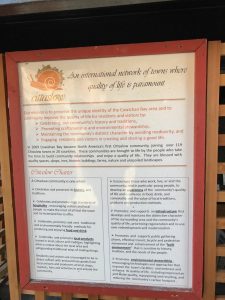
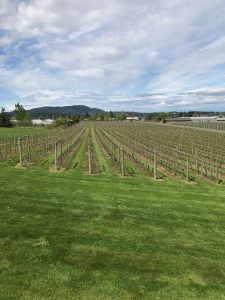
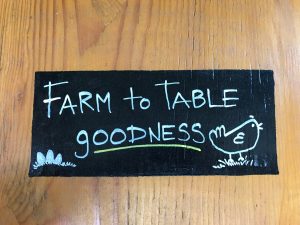
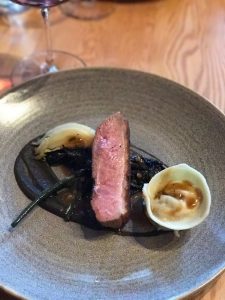
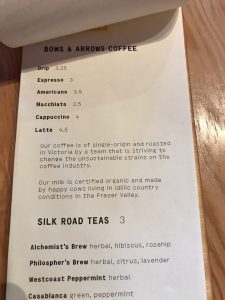

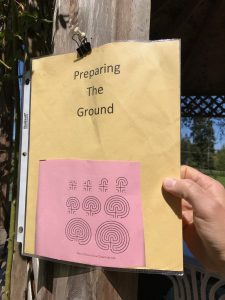


May 17, 2017 at 4:50 pm
B.C. FTW!!!!